Climate Matters: Our Changing and Resilient Planet
Haas Center for Performing Arts Gallery (PAC 1121), Allendale Campus
January 10 - March 28, 2025
Reception: Thursday, January 16, 5-7pm
Hours:
Monday - 10am-5pm, Tuesday - 10am-5pm, Wednesday - 10am-5pm, Thursday - 10am-7pm, Friday - 10am-5pm
Closed: Monday, January 20 (MLK Day); Closed Spring Break March 3-7, 2025
Parking:
Guests and visitors may utilize the pay-to-park areas marked in green on the campus maps. Please use LOT H2 on the Allendale campus, across the street from the Haas Center for Performing Arts. When parking in pay-to-park, we highly recommend using ParkMobile. ADA parking is available in the KC LOT. Large groups, please get in touch with the gallery for parking passes.
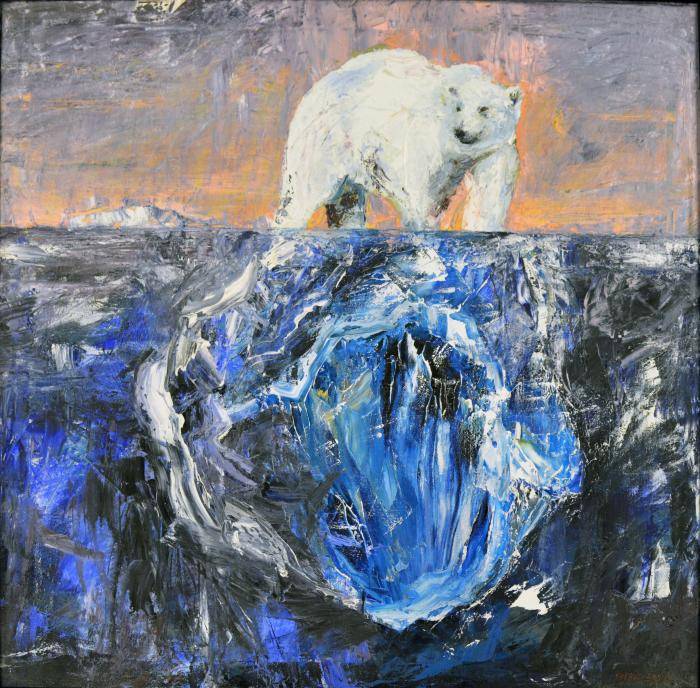
Sheryl Budnik, Stranded, 2015, oil on canvas, 2017.55.1
Climate Matters
Drawn from the art collection at Grand Valley State University, this exhibition features work by artists engaged with the Earth and our impact on it. Some examine the complex interrelatedness of our planet, human and environmental adaptability, and the unpredictability of nature. Others call attention to the consequences of industrial exploitation, rapid growth, and the pursuit of unsustainable resources.
These works are further contextualized by short responses contributed by faculty and staff from across the university’s departments and divisions. This wide range of voices personalizes the work, calls us to action, and elevates our wonder of this changing and resilient planet.
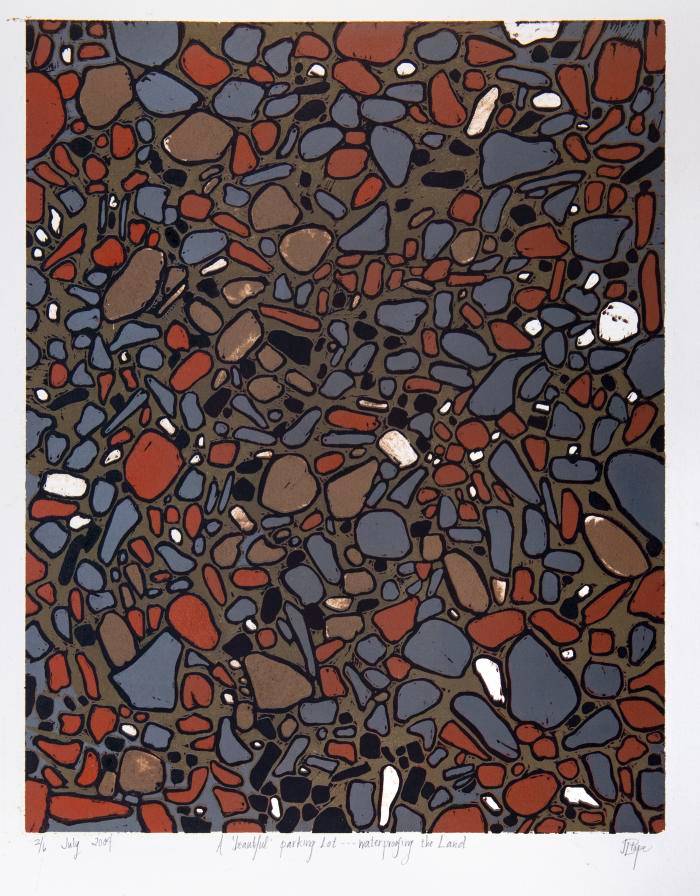
Jennifer Pope, A Beautiful Parking Lot - Waterproofing the Land, 2004, reduction woodcut, 2005.078.1
It is curious that the phrase “pave the way” has been used as a metaphor to champion innovation and success. Pope invites us to reconsider these clichés and ponder the asphalt and blacktop used for roads, parking lots, and even our playgrounds. These surfaces combine bitumen, a petroleum-based binder, with varying amounts of aggregate, crushed stone, sand, and gravel. The artist captures the colors, shapes, and textures of these materials, presenting them for the viewer’s careful examination. In so doing, she places us face to face with a manufactured terrain, prompting us to come to grips with its negative impact on the landscape. - Sigrid Danielson, Associate Professor, Department of Visual & Media Arts
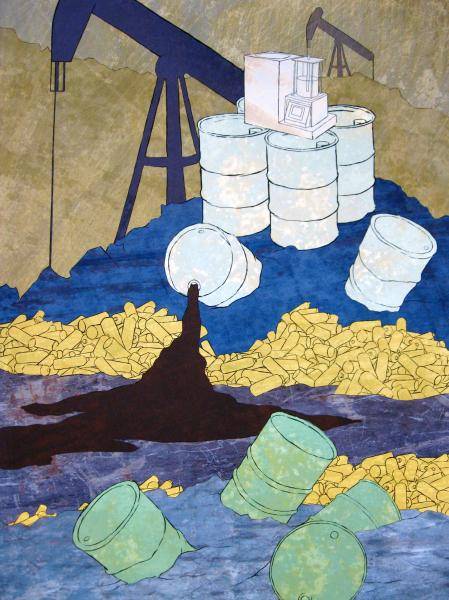
Ryan Harbin, More is Better, 2011, digital print, 2011.22.4
Harbin’s depiction of the seemingly unending abuse of earth’s natural resources is both vibrant and haunting. The use of color in this work is perhaps its most striking feature, evoking a sense of the diverse beauty the earth can produce alongside the ways in which human civilization has chosen to “honor” this beauty. Oil wells, which continue in the distance, remind the viewer that we now also utilize more violent forms of resource extraction (e.g., hydraulic fracturing) in an effort to absorb and own every prized ounce of the earth itself. In this way, the piece foreshadows the prioritization of profit over preservation. - Jacquelynn Doyon-Martin, Professor and Director, School of Criminology, Criminal Justice, & Legal Studies
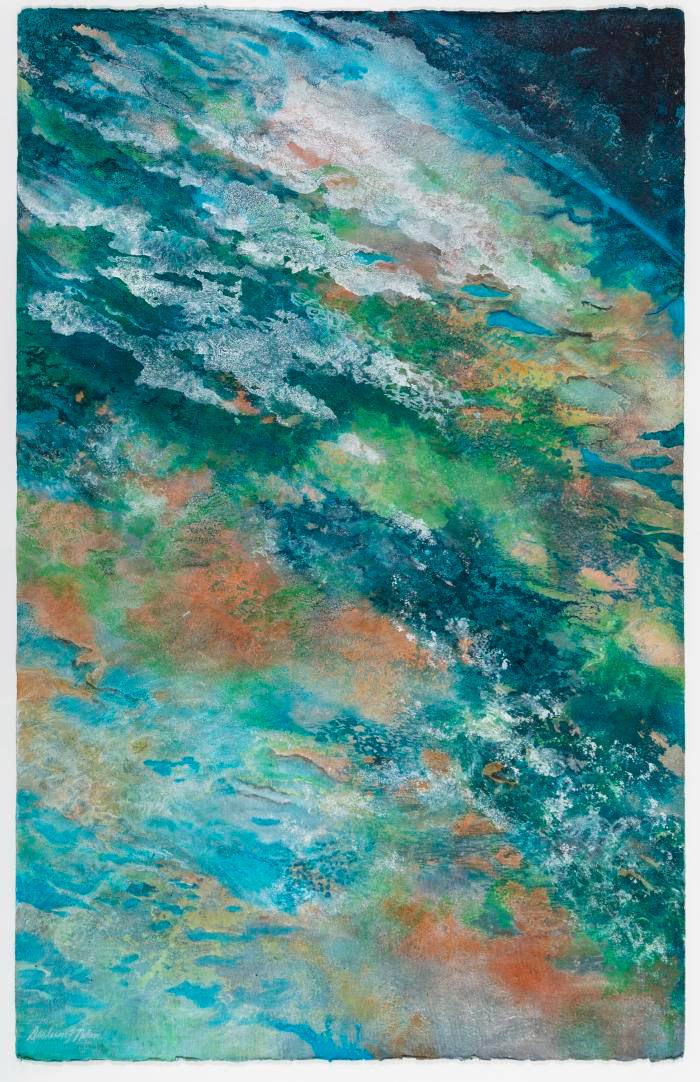
Darleene Nelson, A World Imagined, ca. 2002, mixed media acrylic, 2002.636.1
The colorful expanse evokes a sense of hopefulness. The blues and greens signify environmental health and healing, a reason for optimism. The texture of the painting highlights the diversity of the landscape. Showcasing the planet from a distance reminds us that we are all in this together. Hope is not lost, and, collectively, we can make a positive impact on the planet. - Yumiko Jakobcic, Director, Office of Sustainability Practices
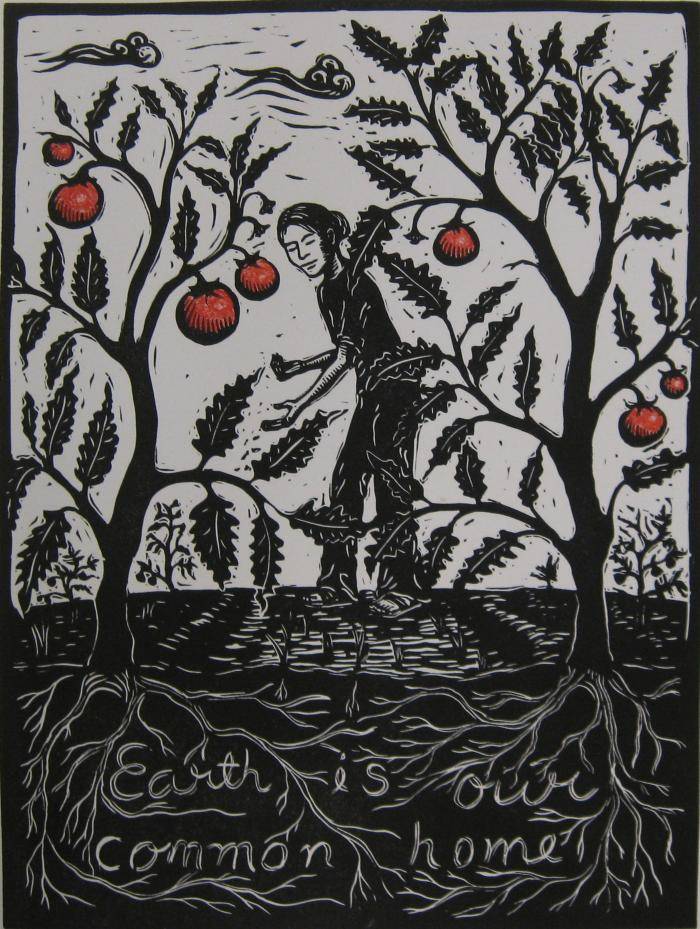
Alynn Guerra, Earth is Our Common Home, ca. 2010, print, 2014.98.21
Guerra explores the cycle of life through an aesthetic influenced by the Mexican printmaking tradition. Red tomatoes, the food produced by the plants, contrast the dark tones; an attentive eye reveals a female farmer, peacefully dropping seeds. Placed in the background, the woman is portrayed as one actor amongst others perceived as integral to the soil cycle. The roots of the plants, entangled with words, remind us of the intricate relationships upon which that cycle depends—relationships that transcend the imagined boundaries of the nation-state. Home, then, is seen as a space for care, shared by humans and nonhumans alike. - Mayra Fortes, Associate Professor, Modern Languages and Literatures
Location
January 10 - March 28, 2025
PAC Gallery (PAC 1121)
Haas Center for Performing Arts, Allendale Campus
1 Campus Dr.
Allendale, MI 49401
Contact
For special accommodation, please call:
(616) 331-3638
For exhibition details and media inquiries, please email:
Joel Zwart, Curator of Exhibitions and Collections
[email protected]
For learning and engagement opportunities, please email:
Jessica Sundstrom, Learning and Outreach Manager
[email protected]
